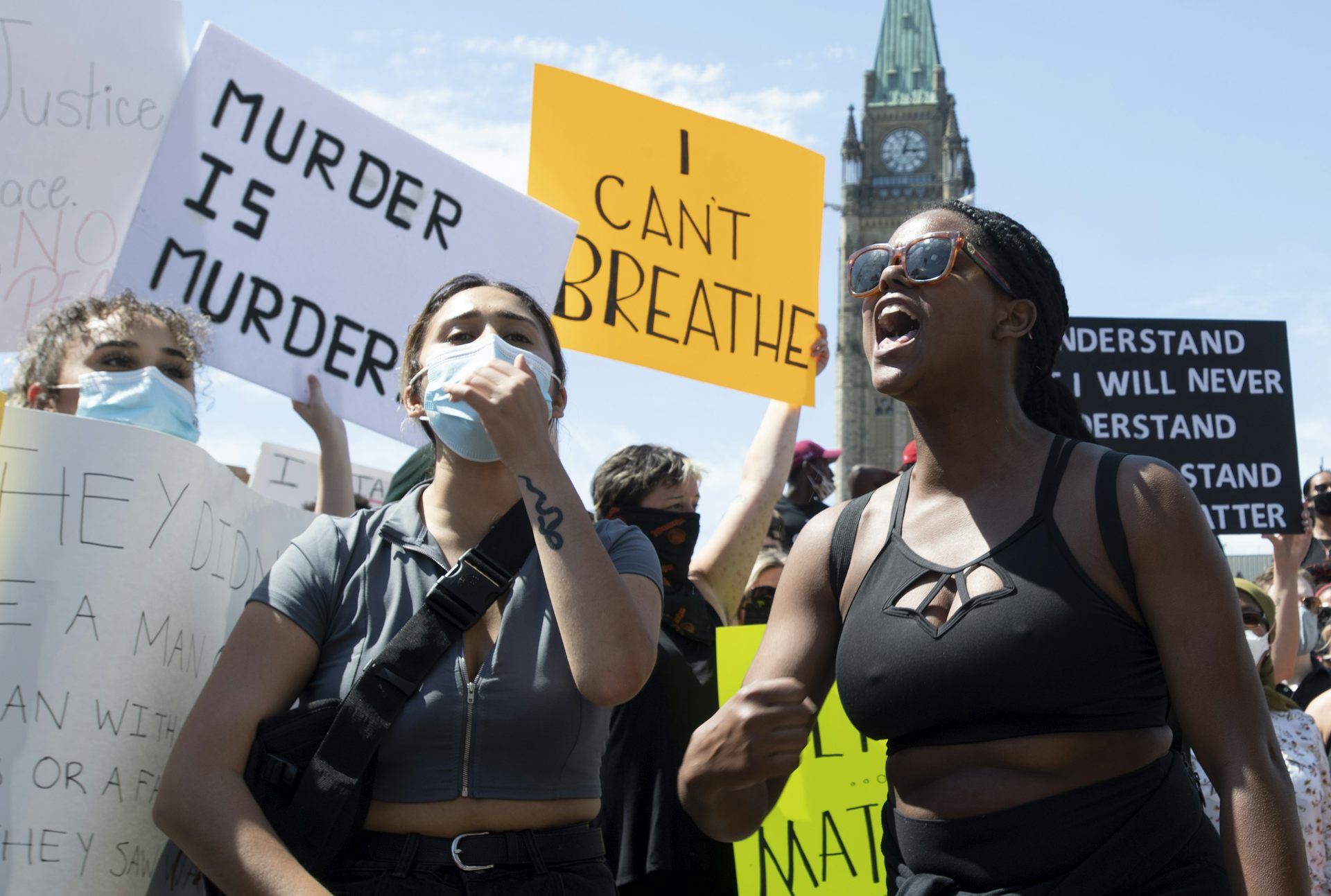“I did not consider a career as a university professor or a position in academic leadership because I have never been taught by someone who looked like me!”
A graduate student shared this comment with me in 2016. Reflecting on my academic journey towards becoming a clinical assistant professor in occupational therapy at D’Youville University in Buffalo, New York, I realized we had something in common with each other — and with many BIPOC people at large universities.
Our conversation about the lack of BIPOC role models in higher education is now the impetus of my doctoral research.
In the Doctor of Science in Rehabilitation and Health Leadership program at Queen’s University, with a research team, I am examining the importance of BIPOC student participation to shape campus justice, equity and diversity resources.
Team approach
Our steering committee of BIPOC researchers (Omar Baboolal, Cortney Clark, Emmanuel Fagbola, David Oteng Pabi and Trinda Penniston) is investigating how power structures in higher institutions foster racial imbalance. Janet Jull, Yolanda Suarez-Balcazar and Megan Whelan are members of my doctoral advisory committee who collaborated with me in discussion when I wrote this article.
The importance of a collaborative team approach to research evolved from understanding a shared decision-making process — a partnership between a patient and clinician used in health care.
Shared decision-making reflects collaboration and communication by positioning the patient as an expert in relation to their own health care. The process provides a way to meet the needs of patients as they make difficult health decisions. In our work, we are using this model to include BIPOC students as core collaborators in naming how racial inequities manifest on campus to make universities more racially just and inclusive spaces.
Our research is one way to disrupt the system. We focus on collaborative knowledge exchange between BIPOC students and researchers that will result in the development of anti-racism faculty and staff training resources for use at Queen’s.

BIPOC students are core collaborators in naming how racial inequities manifest on campus to make universities more racially just and inclusive spaces. (Shutterstock)
Negative effects of systemic racism
Our research has documented how BIPOC students in higher education feel unwanted and invisible and suffer from imposter syndrome. These feelings are a result of systemic racism.
Systemic racism, also called institutional racism, refers to how white superiority becomes entrenched in the policies and practices of an institution, resulting in systems that advantage white people and disadvantage BIPOC in health care, justice and education.
The term gained increased attention following the murder of George Floyd in the United States and demonstrations of Black Lives Matter worldwide.

The term ‘critical race theory’ gained increased attention following the murder of George Floyd and demonstrations of Black Lives Matter worldwide. (THE CANADIAN PRESS/Adrian Wyld)
Even in Canada, with its policy on multiculturalism, systemic racism is evident in institutional policies and processes that maintain racial inequities.
In North America, systemic racism is an insidious feature of higher education institutions. University structures, policies and procedures embody systemic racism.
Critical race theory approach
We determined that our research necessitated the involvement of people who would benefit from the study, namely BIPOC students. Creating a steering committee involved recruiting Black student leaders and BIPOC students who reached out based on their interest in the study.
Five steering committee members from different programs and with varying career goals provided invaluable insight and guidance throughout the research process. Typically, BIPOC students engage in initiatives against racism, such as activist forums at the student level — and receive little to no acknowledgement from university administration.
The steering committee met monthly to identify, discuss and validate decisions based on our terms of reference guided by the theoretical underpinnings of critical race theory (CRT).
Together, we chose critical race theory as a research lens that focuses our work on understanding systemic racism and a mechanism for social change. In higher education, CRT interprets how dominant groups perpetuate racism by disregarding the experiences of racism that shape the lives of BIPOC students.
Perspectives of BIPOC students
Despite the recent debates surrounding critical race theory, this theoretical approach is misunderstood.
CRT exposes how higher education systems undermine opportunities to welcome and include everyone.
For BIPOC students, universities create initiatives to improve the campus environment. Still, the university administrators often fail to act on the steps needed to transform racial inequities.
Although most Canadian universities identify and implement anti-racism initiatives, many activities focus on addressing systemic issues faced by BIPOC faculty and documenting their perspectives as universities examine their systems, structures and policies. The creation of the initiatives often does not focus on the perspectives of BIPOC students.

How are voices of BIPOC students shaping anti-racism initiatives on campuses?
Student-created platforms
We determined that dismantling racism in universities must include the voices of BIPOC students to identify action steps that promote policies and practices that focus on justice, equity, diversity and inclusion. At Queen’s University, some BIPOC students had already created platforms to share their stories about racism.
In response to the social media sites, Queen’s administration committed to addressing systemic racism. The initiatives do not meet the needs of BIPOC students at Queen’s as the initiatives do not educate non-BIPOC students about racism.
The response of Queen’s administration is an example of how good intentions are not enough. Our higher education institutions and leaders need to understand how to work together and share power with BIPOC students. The collaboration will find solutions to extremely important and complex societal problems.
Persistent inequities
Despite years of equal opportunity initiatives in Canadian higher education institutions, inequities persist. For example, 2016 data from Statistics Canada showed that 94 per cent of Black youth aged 15 to 25 aspired to obtain a bachelor’s degree or higher; however, only 60 per cent believed they could.
Education experts note that Black students go into educational systems that see them as having deficits, and rarely receive encouragement from teachers.
Learning resources are essential at all levels in the university, to address the BIPOC students’ feelings of invisibility and imposter syndrome and to lead pragmatic changes in structures and leadership.
Written by Deborah Francis, Doctor of Science Candidate, Rehabilitation and Health Leadership, Queen’s University, Ontario
This article is republished from The Conversation under a Creative Commons license. Read the original article.
![]()
5 Ways to Support HipHopCanada:
- Submit Your Music
- Follow Canadian Fresh (HipHopCanada’s Spotify Playlist)
- Follow us on Instagram
- Follow us on X (Twitter)
- Like us on Facebook



















































